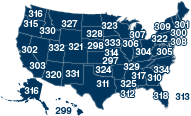Earlier this month, the Trump Administration issued its second annual budget proposal. Much like last year’s budget, the FY 2019 Trump budget attacks our hard earned benefits that were won through many rounds of contract negotiations and legislative activities during past years. Listed below are some of these unjust proposals that, if enacted, would have a punishing effect on our active and retired members. All members should rest assured that the NPMHU will be working hard to make certain that these proposals are rejected by Congress and never see the light of day.
On Federal Retirement:
This Trump budget proposes to increase FERS contributions for active federal and postal employees covered by the Federal Employees Retirement System (FERS). Contributions from employees would be increased by one (1) percentage point each year until employee contributions equal the Postal Service’s governmental contributions. Full implementation of this proposal would take 5 to 6 years, and for certain mail handlers would result in increased employee payments of about 6% of base pay over that period. The actual impact on Mail Handlers would depend on their date of hire into the career complement, as Mail Handlers hired before 2013 now pay 0.8 percent, while Mail Handlers hired after 2013 pay either 3.1 percent or 4.4 percent. Under this proposal, the FERS contribution rate – currently 14.5% -- would eventually be split 50-50 between Mail Handlers and the Postal Service.
The Trump budget also proposes additional cuts for all future retirements under FERS and the Civil Service Retirement System. This part of the Trump proposal would require that the computation of retirement benefits be based on a high-5 rather than a high-3 system. More specifically, employees retiring under an enacted Trump budget would have their annuities based on their highest average pay over five years (high-5) instead of over their highest average pay over three years (high-3).
Another change proposed by the Trump budget would eliminate the annuity supplement that attempts to bridge the gap for employees who choose to retire under FERS before they turn 62 years of age and therefore qualify for Social Security benefits. For Mail Handlers who prefer to retire prior to age 62, this change could have a devastating impact.
Another lowlight of the Trump budget proposal would eliminate cost-of-living adjustments (COLAs) for newly retired FERS retirees, whereas CSRS retirees would see a 0.5 reduction in future COLA each year. These changes, if enacted into law, would cause great distress for retirees who necessarily rely on annual COLA increases to maintain their standard of living.
The Trump budget also would reduce the interest rate on the Government Bond (G) Fund portion of the Thrift Savings Plan (TSP), which is the most used investment vehicle available in the TSP. The new rate of return would be tied to the interest rate on 90-day Treasury bills, instead of an average based on higher medium- and long-term Treasury bond rates. For example, using the past 12 months, this change would reduce the rate of return from 2.33 percent to only 1.55 percent, with this penalty on participants increasing if longer-term interest rates continue to rise.
Federal Employees Health Benefits
In addition to cuts in retirement, the Trump budget also proposes, for all active and retired federal employees, to decreasing the federal government’s contribution to the Federal Employees Health Benefits Program (FEHBP) from the current 72 percent to only 65 percent.
This change would not immediately apply to active Mail Handlers covered by Article 21 of the National Agreement, but it would encourage the Postal Service to continue submission of its routine bargaining proposals that seek to shift more of the costs of health insurance to Mail Handlers and other postal employees.
Postal Service Cuts
The Trump budget refers to postal reform, but only to propose a reduction in USPS costs totaling more than $44 billion over the next ten years. Little substance is provided, but the Trump Administration undoubtedly would support USPS service cuts, likely through the closing or consolidation of mail processing facilities, use of more efficient delivery methods (reducing door to door delivery) or a reduction in delivery schedule.
U.S. Department of Labor
Under the proposed Trump budget, a 21% cut would be applied to the Labor Department, including deep reductions in worker training, especially in areas affected by natural disasters, for veterans, and for Native Americans.
Notwithstanding these drastic cuts, the Trump budget includes major increases for the Office of Labor-Management Standards to support additional audits of labor unions and more intrusion into the internal affairs of most labor organizations.
National Labor Relations Board
The Trump budget proposes a 9% cut in funding for the National Labor Relations Board, an independent agency that is important for the enforcement of employee rights. This has led to proposals to eliminate Regional Offices and centralize more NLRB activities in the currently anti-union, Washington, DC office.
* * *
Obviously, this Trump budget for FY 2019 is only a proposal, and is unlikely to be adopted in its current form. But it demonstrates the priorities of the White House, which clearly seeks to cut wages and benefits for federal and postal employees, while cutting the size of government without any rationale. The NPMHU will work with Congress to ensure that these proposals are roundly rejected.
OFFICE OF MANAGEMENT AND BUDGET, 2019 BUDGET OF THE U.S. GOVERNMENT (pdf)
